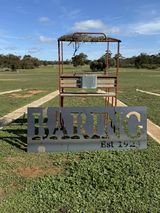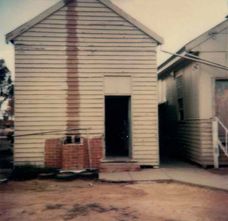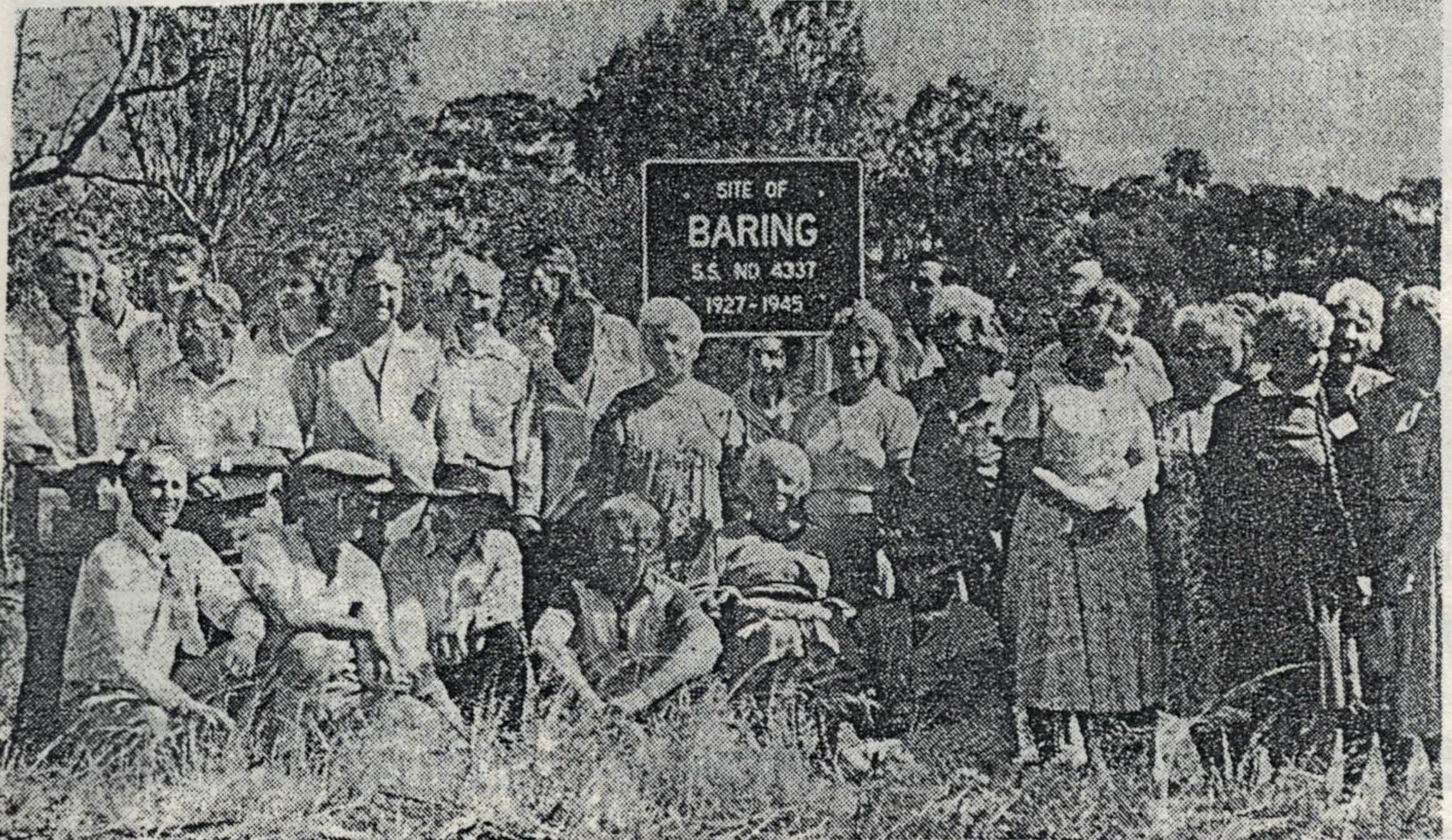History of Baring

Many of those settling in the Baring and Baring North areas, were Returned Servicemen taking up land as part of the Soldier Settlement Scheme administered by the Closer Settlement Board. The area saw much activity taking place in those early years following the War, with more land being taken up and families coming to settle. About thirty families settled in the area in a two year period. The settlers were enthusiastic about their new area and were keen to establish a community, and were tireless in their efforts, giving of their time and often scarce funds to undertake building facilities and amenities. Because of the relative isolation of the area, a close knit community developed.
It wasn't long before moves were underway to have Soldiers Memorial Hall built, and this was completed in the late 1920's. The Hall became the focus for the district and was the scene of many memorable functions. In 1946/47 however the hall was dismantled and re-built as Supper Rooms at the Patchewollock Hall.

In 1928, the Baring school building was opened opposite the site of the Hall. Prior to the erection of the building, classes had been held in the home of a local family. The Baring School continued to operate until 1945, when the building and pupils became part of the Patchewollock Group School. A building was erected at Baring North in the late 1920's to serve the dual purpose of School and Hall. Locals in that area worked hard for the establishment of the building to serve their community in that relatively isolated area. School finished at Baring North in 1936. The building is now part of the Grigg family's shearing shed.
The Post Office and Telephone Exchange was run by Mrs. Ruby Walch from her home, approximately 11/2 miles from the Hall and School. The Post Office officially closed in 1957.
At various times rabbit buyers also operated setting up their chillers in the area to purchase rabbits. In the late 1930's there was even a shop at Baring - the main business being ice, soft and hard drinks.
In the mid 1920's the Lands Department made available to the local Baring community the rest of the Fox's Tank Reserve on which the Hall and School were built as a Recreation Reserve.
Baring boasted a number of sporting facilities over the years. There was a Rifle Club formed at Baring, and a Rifle Range was set up. In the late 1920's the range was initially set up on land adjoining Allotment 36, known as Lewis' block with the money for the venture provided by the government of the day. In the mid 1930's the range was shifted to Fox's Tank Reserve opposite the present Golf Course. Many successful shoots were held at Baring over the years. There were also a number of good competitors at Baring with some locals competing in the Queens Cup in Melbourne.
The Golf Course was started at Baring in the mid 1930's after the successful formation of a Club, with a nine hole course built. Golf proved popular once established and just prior to World War 2 the course increased to a twelve hole course. The Golf and Sports Club used the same amenities for many years although they were very primitive. The Golf Club remains today as the Patchewollock Golf Club having an excellent course and facilities - certainly a landmark at Baring.
A Race Course was set up in the area, being a very narrow course and this served until the late 1930's when a new course was built - the course crossed over the Baring South road, running along the Rifle Range and coming back into the Reserve at the start of the present third fairway on the golf course, with the straight along the front of the present Club House. Many successful meetings were held there. The Baring Settlers Hall Committee followed the lead of their Patchewollock counterparts and conducted a Sports Meeting at Baring, being the first sporting event in the area. The unregistered meetings were always well attended due to the number of unregistered horses available. The first Sports Meeting was convened in 1927, being known as the Baring Annual Sports held on the Labour Day holiday. The sports were to continue until 1941 when the War forced it to be abandoned. Other events besides horse racing were held on these days. These included foot running, cycling, sheaf tossing, and so forth, with a dance usually held in the evening to conclude the days events. Secretaries of the Sports were :- Mr. E. H. Talbot until 1939, and Mr. J. W. Comini (1940-1941). President over the years was Mr. M. U. Walch.
Tennis became established in the area about 1930 with the building of two dirt courts on an area of the present Golf Course (between the tenth tee off and the eighteenth fairway). It was particularly popular right up until the War, with the Tennis Club building the only modern pavilion on the Reserve. This building was moved to Patchewollock in the 1950's and now stands in the Patchewollock Recreation Reserve and is utilized as a netball shed. In the same area as the Tennis Courts a football ground was built which served for cricket also. Baring had a football team in the Patchewollock Association for the three years that the Association ran and football was played at Baring during those years of 1928, 1929, and 1930.
Baring was certainly an important district with many facilities provided for settlers around the Baring "cross-roads". Unfortunately however, Baring and Baring North were to suffer huge losses of settlers - perhaps the most of any district around Patchewollock. Many were unable to maintain their farms and so were forced to leave, often through drought or depression. Many were Soldier Settlers who found the scheme under which they had been settled a poor one with little consideration given to the special plight of Mallee farmers in terms of acreage, soil type, debt and so on making survival on the land extremely difficult. Despite their fortunes under the Soldier Settlement Scheme, the Board's Inspector for the area was well liked - Mr. R. J. Taafe - as he aided and supported the settlers during their years of hardship. This was evidenced by a farewell given in his honour in July 1928.
With the exception of the Golf Course, little remains at Baring today. Eucalypts however stand as evidence to the location of the school and hall and all the activities that once saw Baring a thriving settlement.

